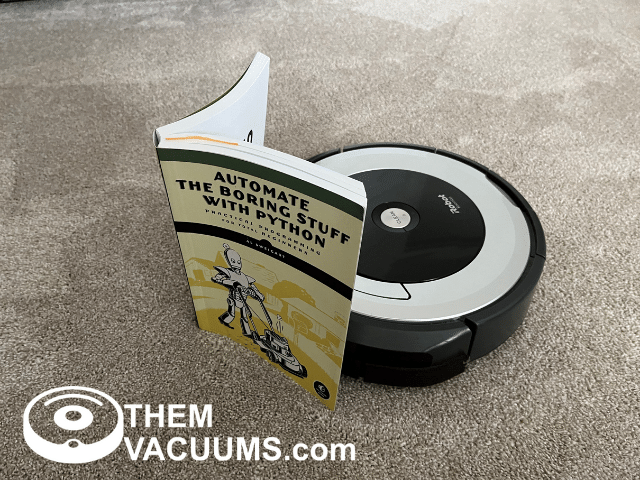
One of the interesting facts about modern Roomba robot vacuum cleaners is that they do get smarter over time and the more you use it. Not only is iRobot, the parent company of Roomba, give you updates to improve them and fix bugs, but the robots with mapping tech will learn your home and figure out the best way to clean it.
Here’s how it works: Whenever Roomba cleans a room, it creates a virtual map of the space. This map includes information on obstacles like furniture and walls, as well as the locations of dirt and debris.
Over time, Roomba will build up a complete map of your home that it can reference when cleaning. This allows it to create more efficient cleaning patterns and avoid areas that it has already cleaned. Returning to the charging base is figured out in the easiest and best way possible, too.
You can even set up no-go areas after the first cleaning and when it’s made the map of your home to make it even smarter about what it cleans. For me, one of those areas is my bar stools as the feet are tricky for it, so I have it avoid them altogether.
iRobot Strives To Make Robot Vacuums Smarter
Not only will your Roomba get smarter over time as it adapts to your home but the company that makes Roomba strives to make their robots better.
One of the latest improvements is being able to detect poop.
Not every Roomba has pet poop detection, but there are a few models with it, and it works quite well. The Robot was trained to learn many types of poop and other objects, and it learns through Ai what to avoid.
Roomba is even smart enough to detect dirt:
This opens so many new possibilities for iRobot for cleaning your home. Being able to avoid poop is just a great start, maybe in the future they can learn to avoid string blinds, divots in the floor, expensive rugs and so much more. The future seems great with iRobot making these improvements!
Virtual Map Of Your Home
As we’ve seen, Roomba does learn the layout of your home over time. However, it doesn’t create a complete floor plan like you might see in a GPS navigation system.
Instead, Roomba creates a virtual map that includes information on obstacles like furniture and walls, as well as the locations of dirt and debris. This allows it to create more efficient cleaning patterns and avoid areas that it has already cleaned.
The Roomba only learns the floor it’s currently on, no robot vacuum can go upstairs (yet). You can have your Roomba learn multiple floor plans or simply let it run, and it will adapt to the floor it’s currently cleaning.
The Roomba expects the room to be slightly different every clean as that is how most people live, things get moved and things get left on the floor.
3 To 5 Cleanings To Learn The Layout
It usually takes a Roomba a 3 to 5 full cleanings to get familiar with the layout of your home. However, this can vary depending on the size and complexity of your home, as well as how often you use Roomba.
Your robot vacuum will have a good idea of your home after the first clean, and you can set up no-go areas, but it will get better over time as it learns your home. It could be a week or two before you start to see your Roomba start to get the hang of everything.
In general, it’s best to run Roomba as often as possible to speed up the learning process. This will allow it to create a more accurate map of your home and avoid areas that have already been cleaned. This is easy to do for most people, as they love playing with their new robot vacuum and run it a lot at first.
Running Roomba Everyday
In my experience with the Roomba, its mapping feature is nothing short of impressive. If yours has this capability, I’d highly recommend running it daily, or even twice a day. It’s been fascinating watching mine gradually ‘understand’ the layout of my home and optimize its cleaning path.
Personally, I’ve found it very useful to schedule the robot vacuum to clean just before I arrive home. There’s something uniquely satisfying about walking into a freshly vacuumed floors every day. However, even with my Roomba’s diligent work, I still pull out my traditional vacuum once a week for a more thorough, deep cleaning. It’s the perfect balance for maintaining a spotless home!
Why Does Roomba Take So Long To Clean?
If you just got your Roomba, the biggest reason it would take so long to clean is because it’s learning your home.
The robot vacuums that map your home don’t go in a random direction until its battery is weak, and instead tries to map your whole home and clean every inch it can.
Robot vacuum cleaners will go around the home along walls and furniture to build the map of the home and to see all the areas they can reach. Once they have the boundary, they clean line by line until they’re done.
They may even skip a room or an area because they’re learning the best way to clean. Since robot vacuums are so meticulously about cleaning, they can seem to take a long time to clean, especially when it’s the first few cleanings as they learn your home.